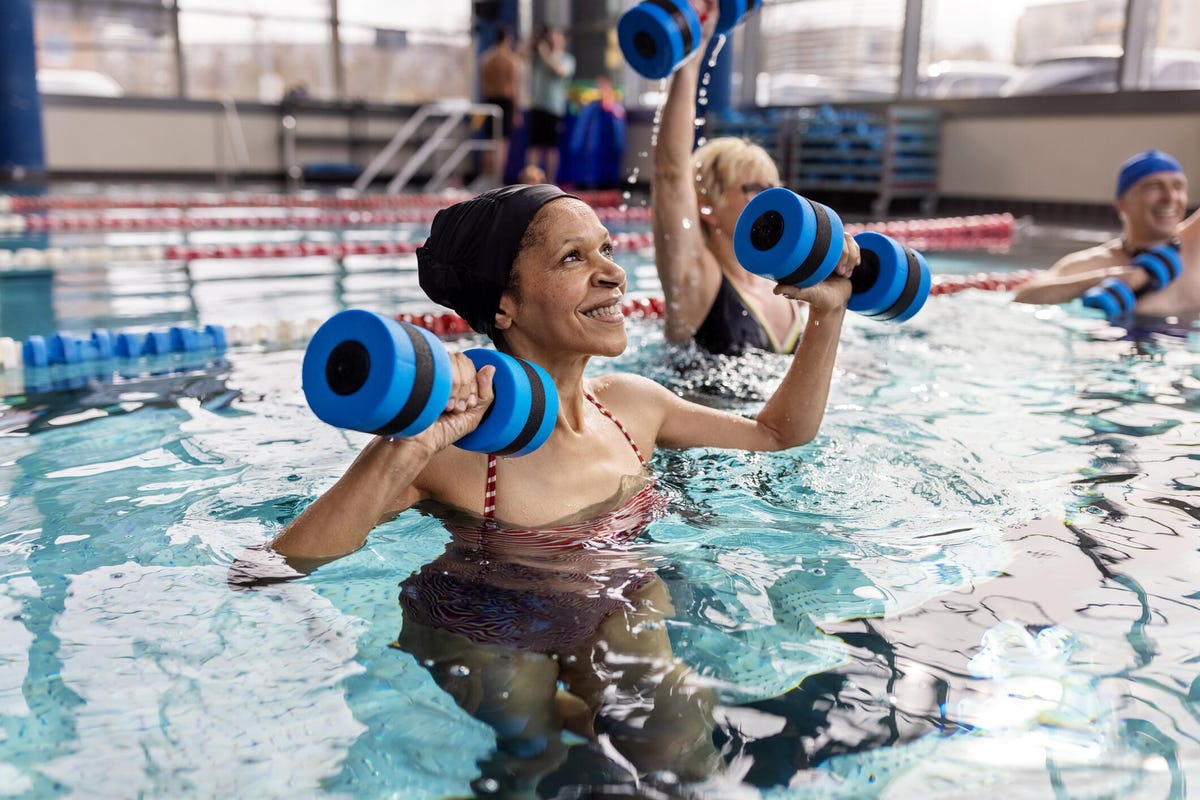Exercise plays a crucial role in promoting health and wellness. Regardless of your age, exercise becomes even more critical as you grow older. Incorporating exercise into your routine can significantly impact your balance, mobility, and strength, and may determine whether you can maintain independence or rely on others for daily activities. However, your workout routine may need to be adjusted compared to what it was twenty years ago. There are exercises that are both safe and beneficial for older adults, while others may need to be modified.
Is exercise safe for older adults? There’s a common misconception among the elderly that exercise is unsafe and should be avoided. However, this belief is untrue and counterproductive for older adults who are striving for optimal health. It is key for healthy aging. According to the US Centers for Disease Control and Prevention, aging raises the risk of several diseases. On the other hand, regular physical activity can help reduce the risk of these conditions, including Type 2 diabetes, heart disease, cancer, and dementia. Therefore, physical activity is not only safe for older adults when done correctly, but it’s also essential for a healthy life. The CDC, physical therapists, and personal trainers worldwide strongly advocate for the need for exercise among the aging population. Kevin Robinson, DSc, a physical therapist and professor of orthopedics and kinesiology, has shared general guidelines for safe exercising for older adults:
– Focus on minimal-impact activities like water exercise, recumbent stationary bikes, and ellipticals.
– Participate in SilverSneakers programs, often available at local health clubs, usually covered by insurance, and designed specifically for older adults. These programs offer the additional benefit of making friends, which can help with consistency in attendance.
– Concentrate on specific muscle groups such as gluteals (butt), quadriceps (thighs), biceps, and abdominals, and be aware of your limitations.
– Include stretching and balancing exercises in your regular exercise program.
The best exercises for older adultsYour choice of exercises depends on various factors such as your current fitness level and any medical conditions that require a limited or modified approach. It’s never too late to start a good exercise program. According to the CDC, adults aged 65 and older should engage in the following weekly physical activities:
– A minimum of 150 minutes of moderate aerobic activity, such as brisk walking, or 75 minutes of vigorous activity, like jogging.
– A minimum of two days a week of strengthening exercises, such as lifting weights.
– Activities to improve balance, such as balancing on one foot.
Here are some examples of what that exercise routine can look like for older adults.
1. Moderate cardioThe CDC defines moderate aerobic activity, or cardio, as a 5 or 6 on a scale of one (sitting still) to 10 (working hard). Some activities that are considered light cardio for one person may be moderate cardio for another.
Walking is a popular form of moderate cardio for older adults. According to Robinson, “Walking can be a great activity. However, many people with arthritis cannot tolerate walking for long distances.” He suggests water exercise for patients with arthritis in their legs or feet, as it reduces the force through the knee by 50% to 75% compared to walking on land. Other forms of moderate cardio include hiking, running errands, doing certain chores, some types of yoga, bike riding, and using an elliptical.
2. Light strength exercisesErin Stimac, a personal trainer and group exercise instructor, recommends incorporating strength exercises that cover essential functional movements, including squatting, hinging, pushing, pulling, and carrying. These exercises are vital for maintaining independence, reducing the risk of injury, and enhancing overall quality of life. Some specific CDC-recommended light strength exercises that can incorporate functional movements include weight lifting, using resistance bands, working in a garden, bodyweight exercises like pull-ups or push-ups, and various yoga postures.
3. Exercises to help your balanceMany older adults experience balance issues, which increases the risk of falls. To enhance balance, it is necessary to perform balance activities for short periods throughout the day. Robinson recommends trying activities such as standing on both feet in front of a counter and then letting go to see how long you can maintain balance without grasping the counter. This activity should be repeated three to five times throughout the day until you’ve built up to three 45-second periods. Other exercises he suggests include repeating the same balance exercise but with closed eyes. Yoga is also a common form of exercise known to improve balance, according to Johns Hopkins Medicine.
Exercises older adults should avoidAre there specific exercises older adults should avoid entirely? According to Stimac, the answer is generally no. “There’s no need for older adults to shy away from any specific movements,” she said. “The fear of injury should not deter them from engaging in strength training. Instead of focusing on limitations, we should explore what movements are suitable for each individual.” If you have a disease, condition, or injury with physical limitations, you should always follow the guidance of your medical doctor, but there are still ways to achieve physical fitness. It simply requires modification and guidance. Stimac emphasizes that there’s no one-size-fits-all approach, and every aging person deserves a tailored program to enhance strength and ability while considering individual needs. “By embracing personalized plans and debunking myths, we empower older adults to lead active and fulfilling lives,” she said.













